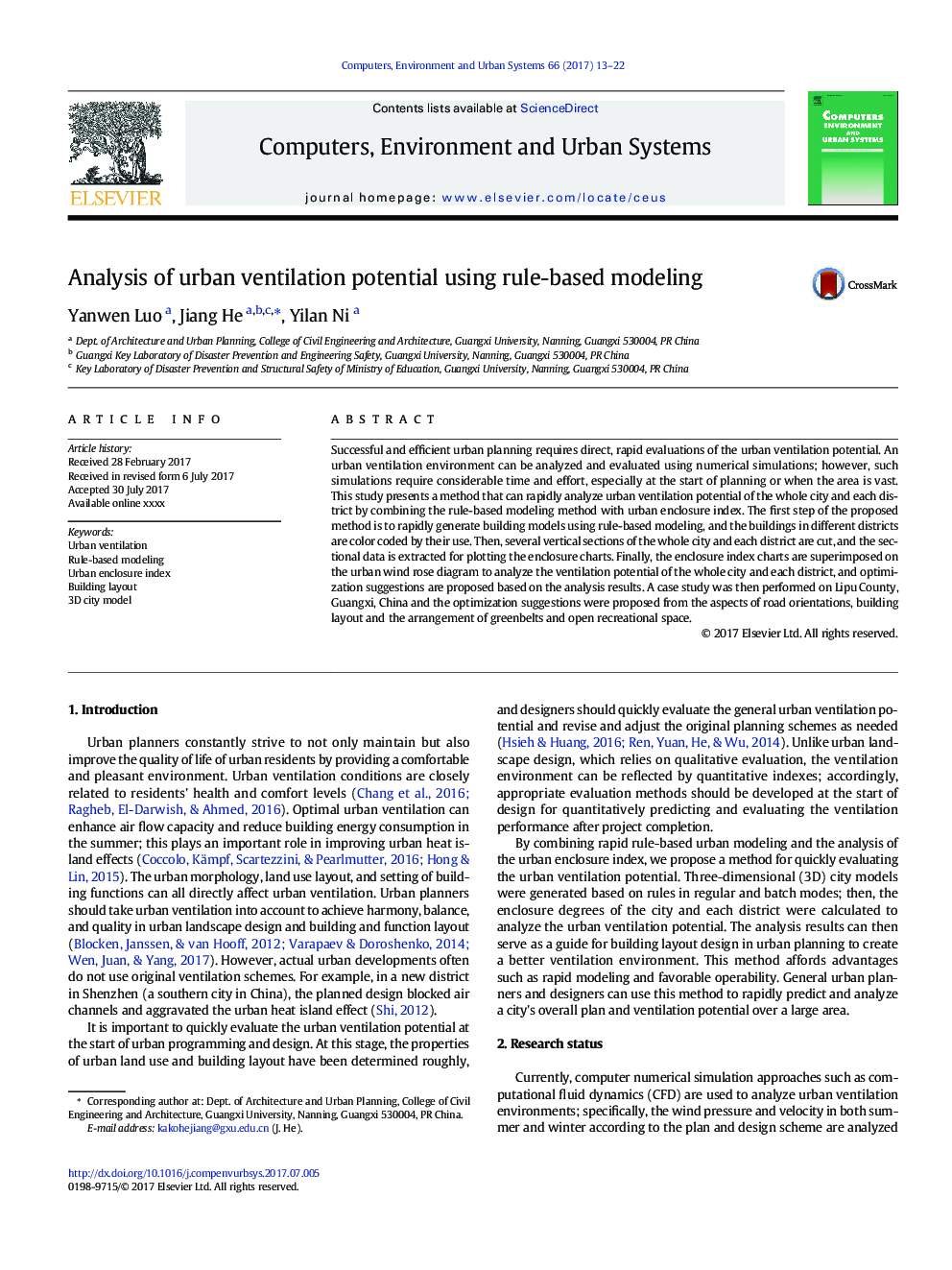| Article ID | Journal | Published Year | Pages | File Type |
|---|---|---|---|---|
| 4965197 | Computers, Environment and Urban Systems | 2017 | 10 Pages |
Abstract
Successful and efficient urban planning requires direct, rapid evaluations of the urban ventilation potential. An urban ventilation environment can be analyzed and evaluated using numerical simulations; however, such simulations require considerable time and effort, especially at the start of planning or when the area is vast. This study presents a method that can rapidly analyze urban ventilation potential of the whole city and each district by combining the rule-based modeling method with urban enclosure index. The first step of the proposed method is to rapidly generate building models using rule-based modeling, and the buildings in different districts are color coded by their use. Then, several vertical sections of the whole city and each district are cut, and the sectional data is extracted for plotting the enclosure charts. Finally, the enclosure index charts are superimposed on the urban wind rose diagram to analyze the ventilation potential of the whole city and each district, and optimization suggestions are proposed based on the analysis results. A case study was then performed on Lipu County, Guangxi, China and the optimization suggestions were proposed from the aspects of road orientations, building layout and the arrangement of greenbelts and open recreational space.
Related Topics
Physical Sciences and Engineering
Computer Science
Computer Science Applications
Authors
Yanwen Luo, Jiang He, Yilan Ni,
